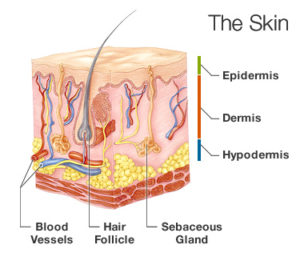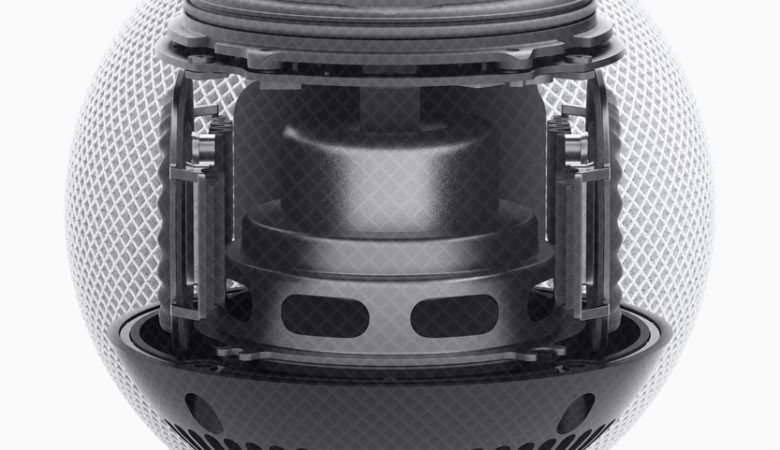The definition of an organ is : An object composed of two or more different types of tissue, has a specific role and is known by its appearance or shape.

The skin is made of different tissues and has a specific role and is well known for its appearance. It is one of the largest organs of the body, at least in terms of surface area and weight or mass. In an adult, the surface of the skin is about 2 square meters and it weighs about 5 kilograms. This is an average of about 15% of body weight.
The thickness of the skin ranges from about half a millimeter on the eyelids to 4 millimeters on the heel. In most areas, however, it is about 1-2 millimeters thick. The organ skin is divided into two parts, a thin epidermis (epidermis) that is outer and a thicker dermis that lies beneath the epidermis. Below that is a layer of fat that does not belong to the skin.
The outer layer of the epidermis is the stratum corneum, which is mostly made up of epithelial cells that form a substance called keratin. Keratin is an elastic protein fiber that protects the underlying part of the skin from various substances, microorganisms and not least water. In the corner layer, the cells are dead, flat and packed together, thus forming a very dense and good defense. Deeper in the epidermis, the cells are vibrant and constantly divide to renew the outer dead layer that is constantly peeling off. It is estimated that the lifespan of such a skin cell from the time it divides until it flakes off is about 20-50 days. The epidermis also contains cells that produce the brown pigment melanin when the sun shines on the skin. The role of the pigment is to protect the nucleus (genetic material) of skin cells from the sun’s ultraviolet rays.
The dermis is mainly made of connective tissue. There are also nerve endings, blood vessels, small muscles, sweat and sebaceous glands and hair follicles.
The skin is very elastic, as can be seen in pregnant women and people with high subcutaneous fat. The role of the skin organ is diverse, most notably protection against various external stimuli. The sebaceous glands help by producing lipids that keep the skin more oily and soft so that it repels water. The fat also contains bactericidal substances. The protective aspect of the skin is best seen when the skin is missing, even if only in a small area (wound). There is also a high risk of bacteria penetrating and causing infection.
The skin has a lot of nerve endings so it is our main sensory organ or senses. If this perception were lacking, we would be unable to move. The skin is also a thermo regulatory organ. If we are too hot, we direct the warm blood into the vascular system of the dermis and increase the production of sweat glands so that the skin becomes well moisturized. The sweat then evaporates from the huge surface of the organ, which cools the skin and cools the blood. Finally, it is worth mentioning that the skin produces a substance that, with the help of sunlight, is converted into vitamin D.
From the above it can be seen that the organ skin is made of several types of tissues, plays important specialized roles and is recognizable in appearance.











